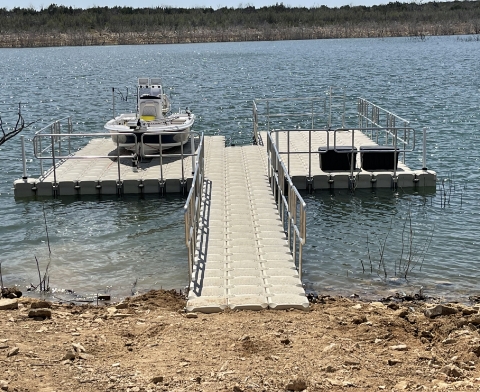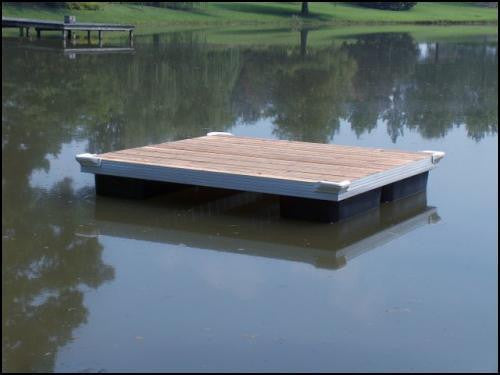Selecting the Right Dock Company: Factors to Consider for a Smooth Installation
The Ultimate Overview to Selecting the Ideal Floating Docks
Picking the perfect floating dock calls for a detailed understanding of various components that influence both efficiency and long life. Factors such as dock types, products, and important attributes considerably influence your decision-making process.
Understanding Floating Dock Types
When choosing a drifting dock, it is vital to comprehend the various types offered, as each offers unique purposes and applications. Floating docks largely fall under 3 classifications: modular, fixed, and pontoon docks.
Modular docks are composed of specific areas that can be conveniently constructed or reconfigured, making them perfect for transforming water levels and diverse usages, such as industrial operations or leisure tasks. Their versatility permits modification based on particular needs.

Pontoon docks are identified by their resilient structure, frequently made up of multiple pontoons that offer security and support. They are especially appropriate for bigger vessels and are commonly used in marinas or for waterside buildings. Understanding these types help in selecting one of the most appropriate floating dock to meet details needs, making sure ideal functionality and safety.
Key Materials for Longevity
Choosing the best products for floating docks dramatically influences their resilience and durability. The most typical products include wood, plastic, steel, and composite products, each offering distinctive advantages and constraints.
Wood, frequently preferred for its visual charm, calls for regular maintenance to stand up to dampness and decay. Pressure-treated lumber can improve resistance to rot, but it may still be prone to pests and weathering.

Plastic docks, made of high-density polyethylene (HDPE), are resistant to deterioration, UV radiation, and impact, making them a preferred option for seaside settings. Their lightweight nature additionally helps with simple installation and relocation.
Metal docks, typically built from aluminum or galvanized steel, supply remarkable toughness and resilience. They are resistant to rust, especially when dealt with, yet may need extra insulation to avoid heat buildup in warm climates.
Composite materials, incorporating wood fibers and plastics, deliver the advantages of both timber and plastic, standing up to wetness and fading while needing marginal maintenance. - floating docks
Ultimately, the selection of materials ought to align with environmental problems, meant usage, and maintenance choices to make certain the floating dock continues to be functional and cosmetically pleasing with time.
Crucial Functions to Think About
While the choice of materials is essential, thinking about important functions for floating docks is similarly essential to make sure optimal performance and customer contentment. One essential attribute to evaluate is the dock's buoyancy capacity, which establishes just how much weight it can support without submerging. floating docks. This is crucial for suiting watercrafts, individual boat, and also entertainment tasks
Additionally, mobility is a considerable consideration. Depending upon your needs, you might desire a dock that is easy my review here to disassemble and transfer, especially if you prepare to relocate it seasonally. Stability is an additional crucial attribute; a properly designed floating dock ought to reduce movement triggered by wind and water currents, providing a safe system for customers.
Security functions, such as non-slip surfaces and rounded edges, are likewise critical to prevent crashes, particularly in wet problems. Think about the accessibility of devices, such as ladders, cleats, and bumpers, which can enhance the capability of your dock.
Installation and Maintenance Tips
Establishing up and maintaining a drifting dock needs mindful planning and interest to detail to guarantee its long life and ideal performance. Begin by choosing a suitable place that lessens exposure to strong currents and waves, which can create wear and tear. Guarantee that the water depth suffices for the dock's elevation which it is anchored securely to avoid motion.
Throughout installation, comply with the maker's standards closely, as inappropriate setting up can compromise stability. Use top notch materials resistant to rust, such as aluminum or dealt with wood, to enhance durability. Frequently inspect all components, including floats, connectors, and anchoring systems, for indicators of damage or wear.
If your dock uses flotation protection tools, ensure they remain intact and free from leaks. By sticking to these installation and upkeep tips, you can take pleasure in a useful and reliable floating dock for years to come.
Budgeting for Your Dock
Budgeting for your dock is a vital action that can significantly affect your overall complete satisfaction and financial investment in a waterside residential or commercial property. Establishing a clear spending plan aids you navigate the different choices available and ensures you make educated decisions that straighten with your monetary abilities.
Begin by determining the dimension and layout of the dock you useful reference require, as these aspects will greatly affect the expense. Floating docks can differ dramatically in rate, depending on products, buoyancy, and features like devices and ramps. Research study different suppliers and suppliers to compare prices and recognize the marketplace worth.
In addition to first prices, consider ongoing costs such as upkeep, insurance policy, and prospective repairs. Designate funds for these repeating costs to avoid shocks down the line. It's likewise sensible to allocate any essential licenses or assessments, which may be needed by regional regulations.
Finally, remember the potential return on financial investment. A tactical dock can boost your residential property's value and charm, providing a positive financial effect in the long-term. By budgeting successfully, you can ensure that your dock satisfies your needs without endangering your monetary stability.
Conclusion
Finally, choosing the perfect floating dock necessitates an extensive assessment of different aspects, consisting of dock types, products, necessary functions, and setup procedures. Focusing on longevity and conformity with local guidelines ultimately improves capability and building value. Cautious factor to consider of budgetary restraints will certainly additionally make sure an audio financial investment. By sticking to these guidelines, people can make enlightened decisions that promote long-term fulfillment and usability in water atmospheres.

While the option of products is important, considering important attributes for floating docks is equally important to make sure optimal performance and individual contentment.Establishing up and keeping a floating dock needs cautious preparation and interest to Visit Your URL detail to guarantee its durability and optimum performance. Floating docks can vary significantly in cost, depending on products, buoyancy, and attributes like devices and ramps.In verdict, picking the ideal floating dock requires a thorough assessment of various elements, consisting of dock types, products, crucial attributes, and installment procedures.